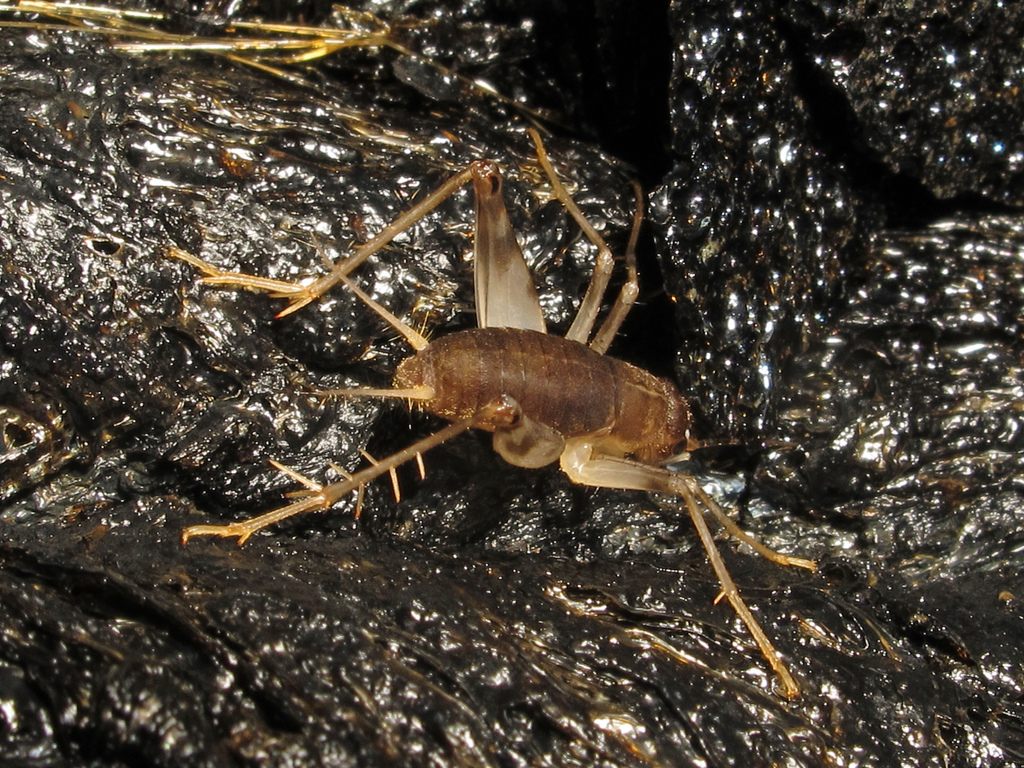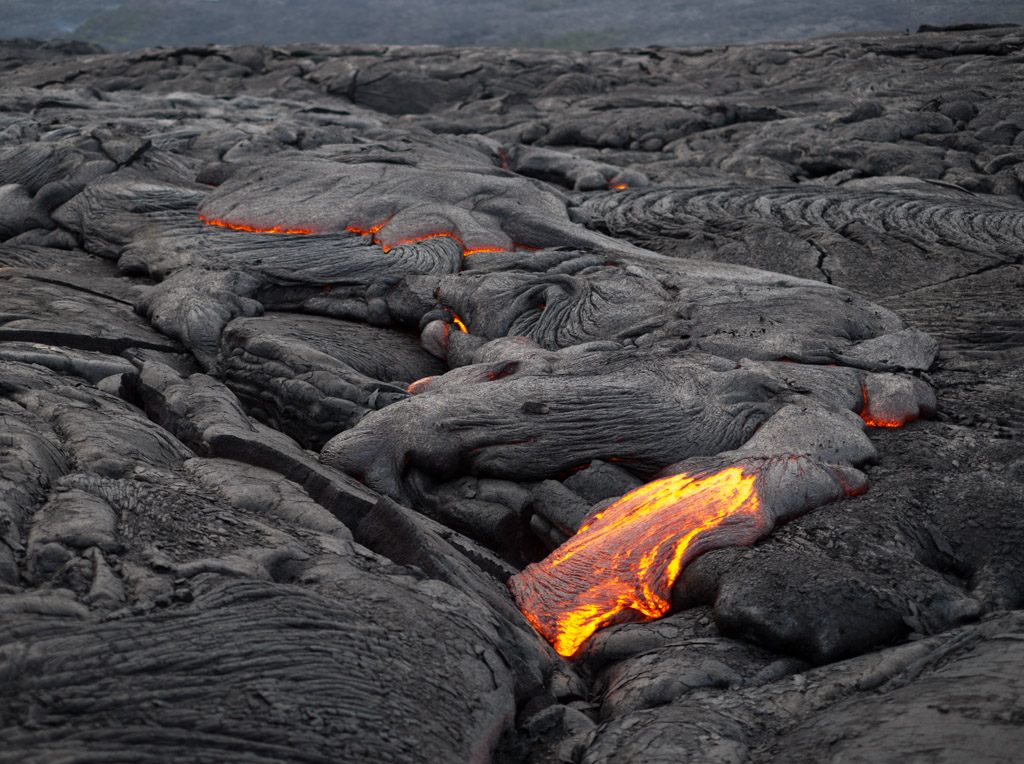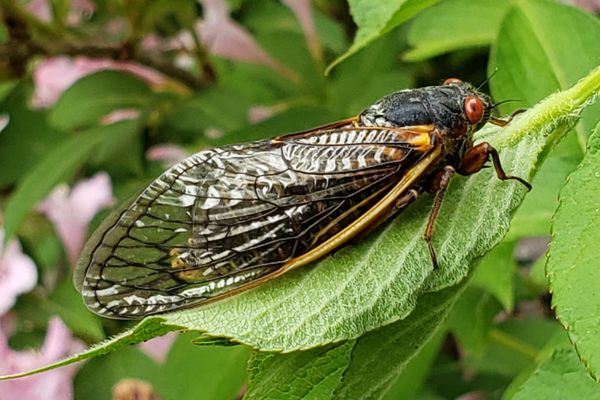A Peek Inside the Extremely Metal Life of Lava Crickets
The volcanic bugs survive on dead plants, sea foam, and a dangerous sex life.

After a volcano erupts, lava crickets are the first on the scene. These insects make their home on the brittle surfaces of cooled lava flows that host no other multicellular life. Lava crickets survive by eating decaying plants swept in by the wind and by drinking sea foam, which contains a protein-like compound similar to what is found in egg whites. By the time green tufts of plants finally begin to sprout in the volcanic rock, the crickets have already moved on—in search of something more barren. In other words, lava crickets are extremely metal pioneers.
The dire lifestyle of the lava cricket—Caconemobius fori, or ‘ūhini nēnē pele in Hawaiian—remains a mystery to entomologists, writes Michael Price in a new feature for Science. Local Hawaiians had long been aware of the crickets’ sudden, post-volcanic presence, but they didn’t appear in scientific journals until 1978, four years after a team from Honolulu’s Bishop Museum spotted the insects while exploring Kilauea’s lava fields.

With such a short tenure in a brutal environment, the crickets haven’t exactly been easy to study. But now, a year after Kilauea’s three-month-long eruption, a team of scientists is stationed at the volcano’s lava fields to learn all they can before the crickets while they’re still in residence.
Led by Marlene Zuk, an entomologist at the University of Minnesota in St. Paul, the team hopes to understand how these insects have come to be such effective colonists in a hostile environment. Most pioneer species—the first to colonize an ecosystem that was previously disturbed or somehow too harsh to support most forms of life—are skilled generalists that can survive anywhere, and can move, eat, and breed easily.
Despite their apparent success, lava crickets don’t fit this bill. They have no wings, they can’t sing, and they only live on lava flows, making it near impossible for the crickets to move quickly or find mates. And on top of that, the crickets have a strangely dangerous mating quirk in which the female sucks fluid from the male’s leg during copulation, a process that can take out up to 8 percent of his body mass. While having fluids in one’s body is generally important for living things, it’s especially vital in the severe heat of a lava field. So either lava crickets have some secret and surprising adaptations, or scientists will need to rework their definition of what a pioneer species can be, Zuk told Science.
Before you can actually study lava crickets, you have to catch them. Zuk and her team rely on a pungently epicurean trap: spoiled bits of cheese in empty wine bottles. They hope to unravel some of the lava cricket’s secrets, such as how the animals meet up in the lava cracks and whether they travel solo or in packs. The researchers also hope to capture some pregnant crickets to maintain a colony in their lab for ongoing testing. As Zuk wrote in an email, “the project is just getting started.”



























Follow us on Twitter to get the latest on the world's hidden wonders.
Like us on Facebook to get the latest on the world's hidden wonders.
Follow us on Twitter Like us on Facebook